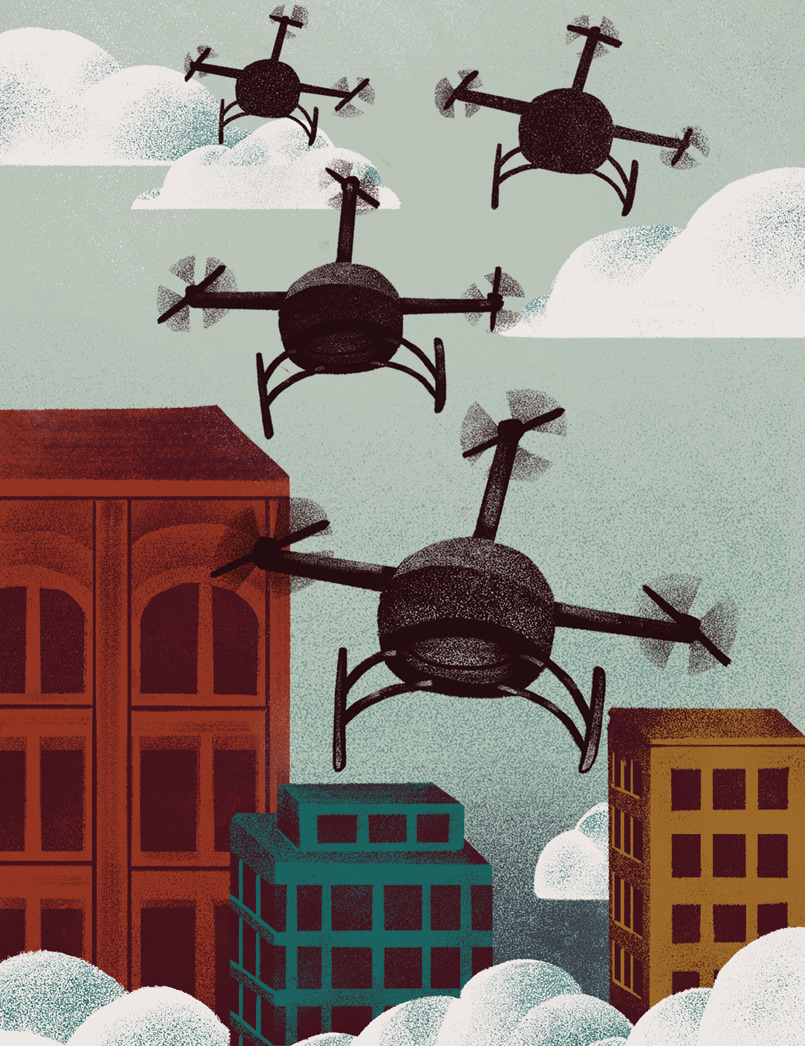Unmanned Aerial Vehicles
Attack of the drones.

The drones are coming, the drones are coming. Too late: they’re already here. These unmanned aerial vehicles (UAV) are dropping bombs, dropping off parcels, dropping in on unsuspecting people living in high-rise condos and office towers. The United States military has an arsenal of more than 11,000, and defence contractors are working hard to build even more, the smallest about the size of a hummingbird, the largest sporting a wingspan of 45 metres, and hydrogen-fuelled engines capable of keeping it aloft for up to four days at a time.
Plenty of others are in on the action too. Deutsche Post DHL is using preprogrammed drones to fly medicine to remote island communities. Scientists are using them to peer into Icelandic volcanoes and to chart ancient Siberian burial mounds. Search and rescue teams in Nova Scotia recently put one to work tracking down a family lost in the woods. In France, drones are telling farmers where to apply pesticide; in Africa, they’re helping conservation officers shut down the ivory trade. Meanwhile in Japan (where else?), an avant-garde dance troupe recently created a performance featuring drones topped with plastic pyramids flying around a black-lit stage.
Not everybody is excited about it all. A sky full of drones may cause serious traffic problems for commercial airlines. And with so many drones filming this and that, the nightmare of a surveillance state just got a lot more real. Most difficult of all, with military drones making assassination so easy, so cheap, and so arm’s-length, the immorality of endless war has never been more clear. Yes, the drones are coming. So too are the problems.




